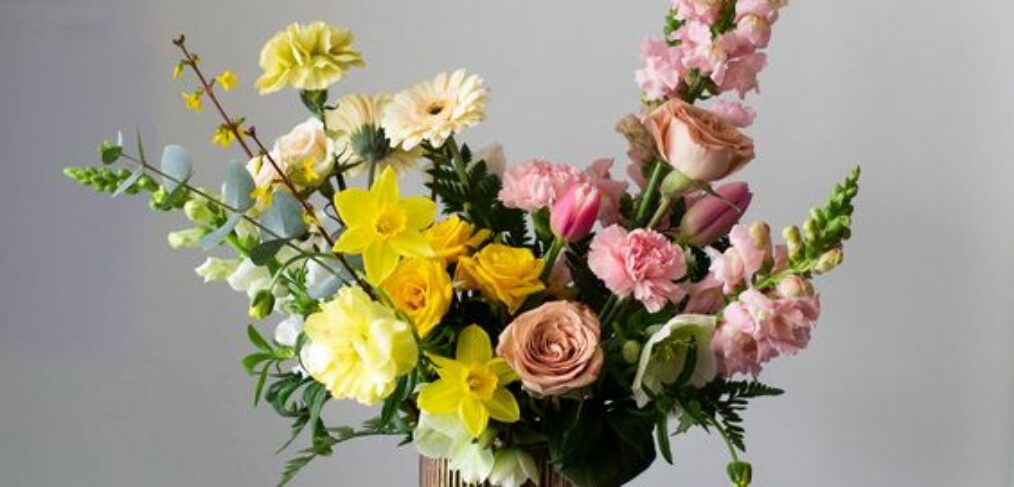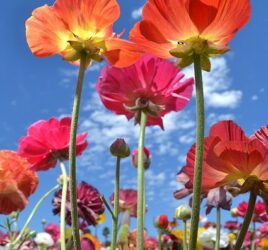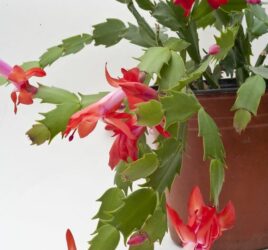
A Comprehensive Guide to Seasonal Flowers: Blooms for Every Season
Flowers are nature’s way of expressing beauty, and their colors and fragrances can evoke different emotions. However, not all flowers are in bloom year-round. Each season brings its own unique set of flowers, and understanding the cycle of seasonal blooms can help you make the most of your garden or floral arrangements. In this guide, we’ll explore the enchanting world of seasonal flowers, from spring’s vibrant blossoms to winter’s subtle wonders.
Spring: A Burst of Color
Spring is a season of renewal and growth, and it’s no surprise that it brings forth some of the most vibrant and beloved flowers. Here are some springtime favorites:
Tulips: Known for their elegant shape and vivid colors, tulips are one of the first signs of spring. They come in a wide range of hues, from bright reds to soft pastels.
Daffodils: These cheerful yellow or white flowers are often associated with Easter and symbolize rebirth and new beginnings.
Hyacinths: With their sweet fragrance and clusters of bell-shaped flowers, hyacinths are a popular choice for spring gardens.
Cherry Blossoms: These delicate pink and white blossoms signal the arrival of spring in many parts of the world, particularly in Japan.
Summer: A Symphony of Blooms
Summer is the season of abundance, and it brings a wide variety of flowers that thrive in the warmth. Here are some summer stunners:
Roses: The “queen of flowers” is at its best during the summer months, and it comes in a dazzling array of colors and fragrances.
Lilies: Oriental lilies, Asiatic lilies, and daylilies all bloom during the summer, adding elegance and color to gardens.
Sunflowers: Known for their cheerful yellow petals and striking height, sunflowers are a favorite among summer flowers.
Zinnias: These colorful, easy-to-grow flowers come in a rainbow of shades and are excellent for attracting pollinators to your garden.
Autumn: A Harvest of Rich Tones
As the days grow shorter and temperatures drop, autumn brings a different palette of colors to the garden. Some notable autumn blooms include:
Chrysanthemums: Known as “mums,” these flowers come in a wide range of colors and are a symbol of the fall season.
Asters: With their daisy-like blooms, asters are a late-season favorite and provide a burst of color in gardens.
Helenium: Also known as sneezeweed, helenium blooms with fiery orange and red hues, adding warmth to the landscape.
Winter: Nature’s Quiet Elegance
Winter may seem bleak, but there are still flowers that brave the cold and offer their subtle beauty. Some winter blooms include:
Hellebores: Often called “Christmas roses,” hellebores produce delicate, nodding flowers in shades of pink, purple, and white.
Pansies: These hardy little flowers can withstand winter temperatures and come in a variety of cheerful colors.
Camellias: Known for their waxy petals and glossy foliage, camellias bloom in late winter, providing a touch of elegance.
Year-Round Favorites: Perennials and Evergreens
While many flowers have their specific seasons, some perennials and evergreens can add color and interest to your garden throughout the year. These include:
Lavender: This fragrant herb blooms in summer but retains its silvery foliage year-round.
Roses (some varieties): Certain rose varieties, like the Knock Out rose, can bloom from spring to frost.
Winter Jasmine: This vine produces bright yellow flowers in the winter, adding a touch of sunshine to your garden.
Understanding the seasonal cycles of flowers can help you plan a garden that’s constantly in bloom or create stunning floral arrangements that capture the spirit of each season. Whether you’re a gardening enthusiast or simply appreciate the beauty of flowers, there’s a seasonally appropriate bloom waiting to brighten your day. Embrace the ebb and flow of nature’s floral tapestry, and you’ll have a garden that’s alive with color and fragrance throughout the year.



